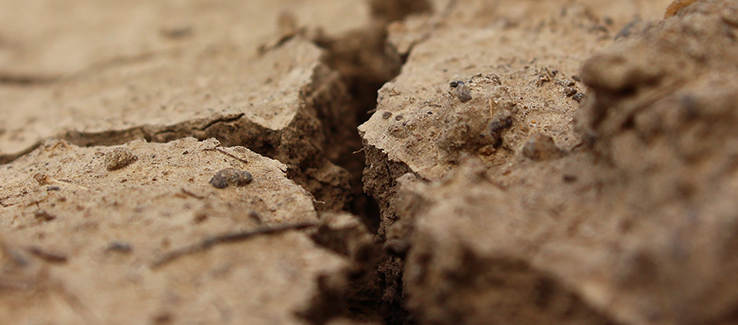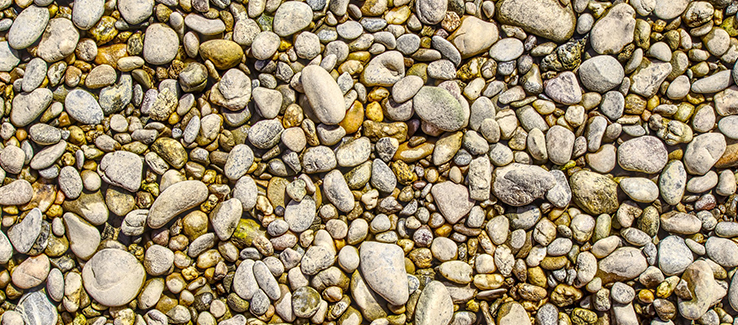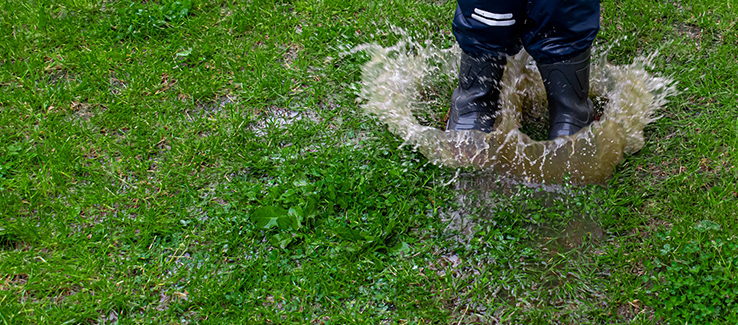How To Fix Drainage Issues in Your Yard
Prevent ponding and unwanted water puddles from forming in your yard. Knowing how to correct drainage problems in your yard will help you prevent structural property damages while improving the health of your grass, plants, shrubs, and trees.
fasttreeremovalatlanta.com gathered information about problems that lead to poor drainage in your yard and how to correct them before causing severe damages or killing plant life.
What Causes Poor Drainage?
Many factors can contribute to drainage issues. The first step in fixing a poor drainage problem is defining what is causing it. Common causes of poor drainage issues include:
Walkways/Pathways
The Problem – If a sidewalk or concrete path runs parallel to the front of your house (or in conflict with the yard’s slope), it could be trapping water, keeping it from running through the yard and into the gutter system, or storm drain.
The Fix – There are multiple ways to correct or reestablish water drainage without completely removing your concrete pathway. Consider the following:
- Install trenches that can absorb or direct water flow
- Remove problematic sections and replace them with gravel
- Install drainage pipes under the pathway
Tip: Contract a professional landscaper to evaluate your drainage problem and offer solutions based on their experience and knowledge.
Incorrect Slope/Pitch
The Problem – Water may pool in a yard because its soil is on a flat plane that doesn’t divert enough water away from the house.
The Fix – Issues with a yard’s slope or pitch can easily be corrected by raising or lowering the ground level with stones, gravel, or soil.
Note: If there are problems with erosion, they should be corrected before attempting to alter your yard’s slope.
Roofing System Downspouts
The Problem – Downspouts aid in water removal from your roofing system and water diversion as it reaches ground level. When downspouts are aimed in the wrong direction or are too short, water can accumulate in depressed or low spots.
The Fix – Your landscaper may identify this problem, but only your roofer should be contracted to extend the length of your downspouts, change their direction, or install shields and diverters.
Soil Erosion
The Problem – Runoff from your roofing system and downspouts can heavily contribute to soil erosion. This erosion can strip away large areas of topsoil, leading to heavy accumulations of water.
The Fix – Divert or channel runoff water to gutter or drain systems. You can also plant deep-rooting grass, plants, shrubs, and trees to anchor the topsoil in troublesome areas of the yard.
Note: When using vegetation to help alleviate water drainage issues, be careful to avoid standing water around plant life. Most plant species will develop root rot or become susceptible to a variety of diseases and insect infestations.
Compacted Soil

The Problem – Soil compaction may occur from repetitive foot traffic, vehicle movement, when heavy objects are placed or stored in one place, etc. This especially occurs in soil with higher clay content. When soil gets compacted, it contributes to other problems like erosion and pooling.
The Fix – The following can help restore your yard’s soil:
- Cease any and all equipment or supply storage
- Prevent foot or vehicular traffic in your yard
- Enrich your soil with organic material and earthworms
- Slow your watering schedule until compacted areas can absorb water properly
- Plant deep-rooting vegetation to break up the soil
Tip: Have your landscaper aerate your yard and reseed its grass.
Poor Feature Installation
The Problem – Features like fencing, decorative rocks, driveways, and patios, when poorly installed, can alter the natural flow of water or block it altogether.
The Fix – Some fixtures can be easily moved or modified to prevent water drainage interference. Those more permanent fixtures may require complete or partial removal to be correctly situated and reinstalled.
How To Solve Drainage Issues in Your Yard
After having identified your yard’s drainage issue and the likely cause. Consider the following options when other fixes fail to correct the drainage problem:
Install a River Bed – A dry river bed is a shallow ditch following the yard’s natural drainage path. Dry beds can be beautiful and functional helping direct and disperse excess water away from your yard.

Install Dry Wells – Dry wells are large underground catch-basins that store and disperse runoff water deep underground. They are best used when your yard has a drainage problem area close to the house or downspouts.
Note: While there are DIY things you can do to address yard drainage issues, the severity of water pooling and complexity of the solution make it worth consulting a landscape design pro with extensive knowledge in land grading and water drainage.
Tip: A landscape architect or landscape designer can come up with creative solutions to turn your pooling/flooding problem into an attractive water feature that can end up being an integral part of your landscape design.
How To Correct Yard Drainage Issues
In this article, you discovered several ways water drainage can be interrupted, leaving your yard with pools that can damage plant life and cause severe structural damages.
Your ability to recognize water drainage issues in your yard will help you get them quickly solved by the right technician.
Ignoring water drainage problems can lead to your home’s structural damage, dying vegetation, and worsening soil erosion.
Sources:
extension.okstate.edu/fact-sheets/addressing-drainage-issues-in-the-urban-landscape.html
extension.illinois.edu/blogs/good-growing/2020-02-12-landscape-drainage-homeowners
extension.umn.edu/agricultural-drainage/drainage-issues-and-answers
(404) 220-9965
(404) 220-9963

